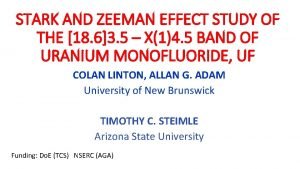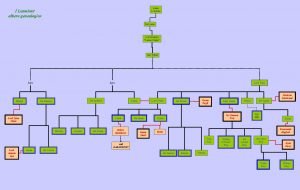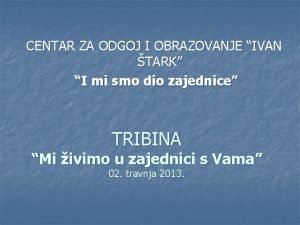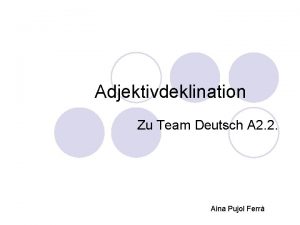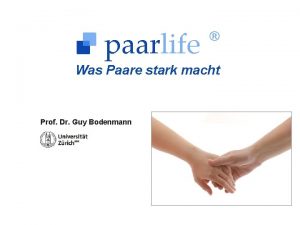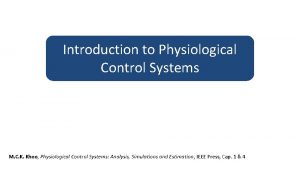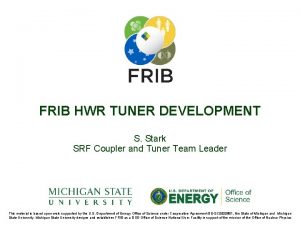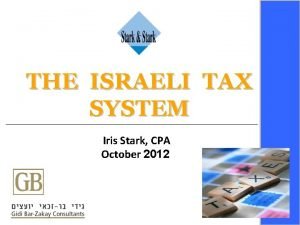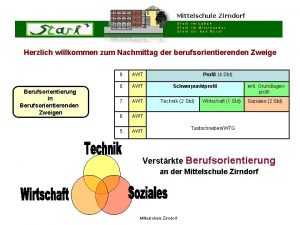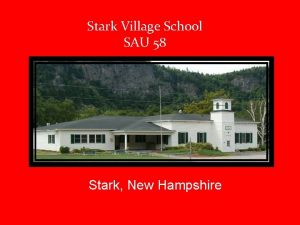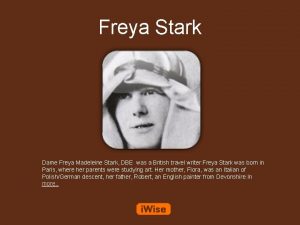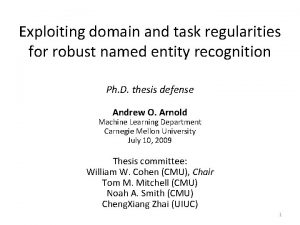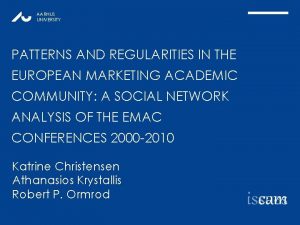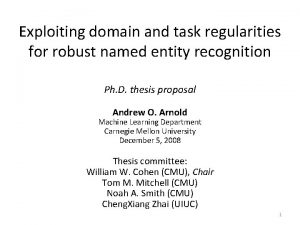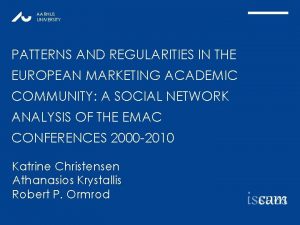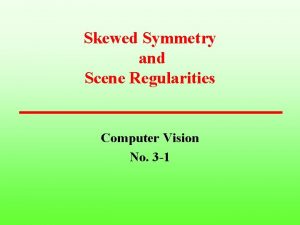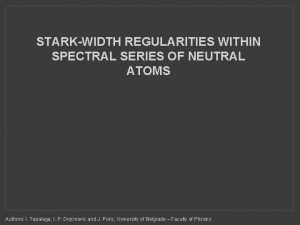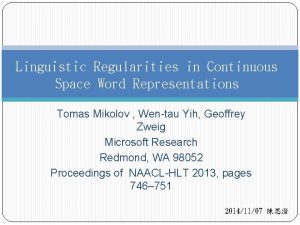REGULARITIES AND SYSTEMATIC TRENDS ON Zr IV STARK














- Slides: 14

REGULARITIES AND SYSTEMATIC TRENDS ON Zr IV STARK WIDTHS Zlatko Majlinger Milan S. Dimitrijević Zoran Simić XI SCSLSA, Šabac, 2017

Different methods to calculate Stark widths quantum mechanical approach (mostly very complicated, sometimes impossible to perform) l Approximative methods derived from theory, e. g. modified semiempirical method (calculations are simplified, less atomic data is needed, but some particular conditions have to be satisfied) l Quick and simple estimates (not very accurate, applicable in every condition, good for noumerous calculations) l

Regularity and sistematic trends Line widths within multiplets, supermultiplets or within transition arrays usually agree within a few per cent, about 30% or about 40% respectively. l For simple (complex) spectra, line widths show pronounced stepwise increases with increasing n (n and l ) of the upper states l For most of the transitions studied in homologous atoms, clear systematic trends are discernible for analogous lines (e. g. resonance lines). l For ions along isoelectronic sequences, clear trends of stepwise decreases in the widths are seen in the experimental data. (Wiese, W. L. , Konjević, N. , 1982, J. Quant. Spectrosc. Radiat. Transfer, 28, 185) l

The aim of research l Searching of regularities and sistematic trends (and estimates based on) for electron-impact widths of 18 Zr IV spectral lines calculated by modified semiempirical method (MSE) l All of estimates are calculated for temperature T = 10 000 K and perturber density N = 1023 m-3

Methods l l l Two directions of research: 1) comparison of existing calculated results with estimates done by some of most usual approximate formulae. 2) finding new estimates based on systematic trend among 18 calculated MSE results. Two groups of estimates are investigated: a) estimates derived from theory b) estimates based on purely statistical analysis of existing data

Two types of estimates l Type I WE 1 = a 1 ∙ Z c 1 ∙ λ 2 ∙ N ∙ f(T) ∙ (Eion-Ej) –b 1 j = upper, lower l Type II WE 2 = a 2 ∙ Z c 2 ∙ λ 2 ∙ N ∙ f(T) ∙ (nj* )b 2 j = upper, lower (Z-1 is ionic charge, n* - effective principal quantum number, WE estimated Stark width in Å, λ wavelength in Å, N – perturber density in m-3, EH – hydrogen atom energy, Eion – ionization energy, Ej – energy of upper (j = upper) and lower (j = lower) level. Coefficients a, b and c in equations are independent of temperature, ionization potential and electron density for a given transition)

Type I l Purić, J. , Šćepanović, M. , 1999, Ap. J, 521, 490 WPUR = 3. 27 ∙ 10 -28 Z 5. 2 ∙ λ 2 ∙ N ∙ T – 1/2 ∙ (Eion-Ej) – 3. 1 l Purić, J. , Miller, H. , Lessage, A. , 1993, Ap. J, 416, 825 WPUROLD = 2. 52 ∙ 10 -27 Z 0 ∙ λ 2 ∙ N ∙ T – 1/2 ∙ (Eion-Ej) – 1. 73


Type II l Cowley, C. R. , 1971, The Observatory, 91, 139


RCORR = 93. 43% WE 3 / Å WMSE / Å

RCORR = 99, 9% WMSE / Å WE 4 = C 4 λ 4 + C 3 λ 3 + C 2 λ 2 + C 1 λ + C 0 (C 4 = -0. 6 ∙ 10 -14, C 3 = 0. 63∙ 10 -10 , C 2 = -0. 12 ∙ 10 -6, C 1 = 0. 7 ∙ 10 -4 , C 0 = 0. 44 ∙ 10 -2)

Importance of represented estimates Available numerous data on Stark widths of spectral lines are up to now still incomplete and sometimes contradictory (e. g. old widths calculated by Griem’s semiempirical method), so the further studies in this scientific area are still needed l Present formulae can be used for quick estimates of other Stark width values for ions from the same homologous or isoelectronic sequence which spectra does not satisfy conditions for the use of some more sophisticated methods. l

THANK YOU FOR YOUR ATTENTION!
 Social regularities
Social regularities Stark and zeeman effect
Stark and zeeman effect Stark metropolitan housing authority jobs
Stark metropolitan housing authority jobs Stark law exceptions
Stark law exceptions Albero genealogico stark
Albero genealogico stark Stark law exceptions
Stark law exceptions Grothus draper law
Grothus draper law Centar za odgoj i obrazovanje ivan štark
Centar za odgoj i obrazovanje ivan štark Team deklination
Team deklination Josua 1, 9 sei mutig und stark gute nachricht
Josua 1, 9 sei mutig und stark gute nachricht Was paare stark macht
Was paare stark macht Physiological control system
Physiological control system Stark tuner
Stark tuner Rondell stark power
Rondell stark power Iris stark
Iris stark

